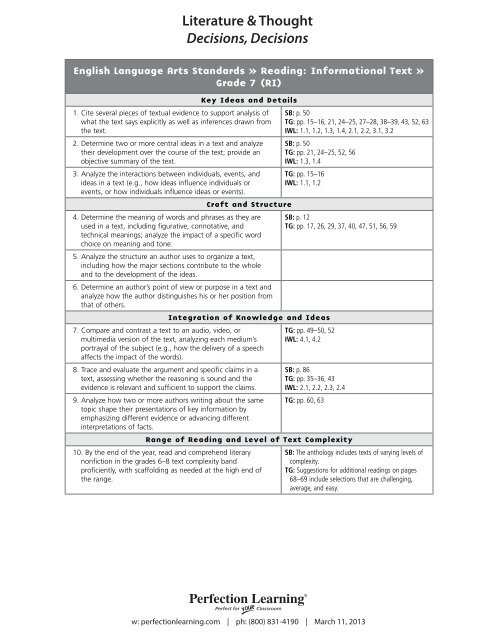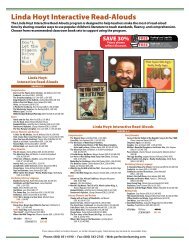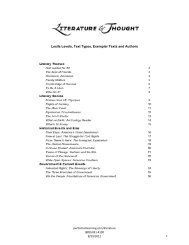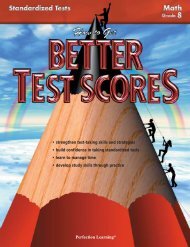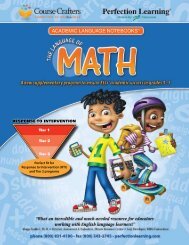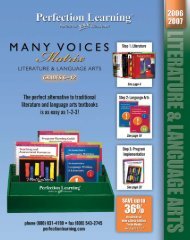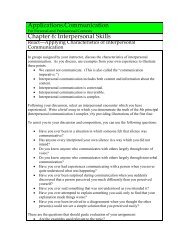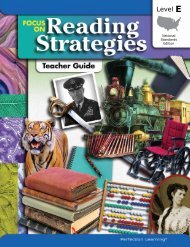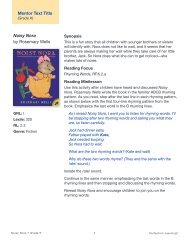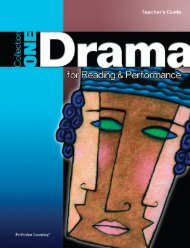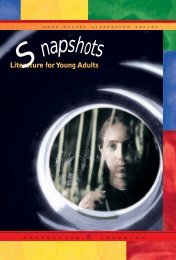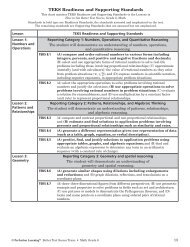Decisions, Decisions - Perfection Learning
Decisions, Decisions - Perfection Learning
Decisions, Decisions - Perfection Learning
Create successful ePaper yourself
Turn your PDF publications into a flip-book with our unique Google optimized e-Paper software.
Literature & Thought<br />
<strong>Decisions</strong>, <strong>Decisions</strong><br />
English Language Arts Standards » Reading: Informational Text »<br />
Grade 7 (RI)<br />
Key Ideas and Details<br />
1. Cite several pieces of textual evidence to support analysis of<br />
what the text says explicitly as well as inferences drawn from<br />
the text.<br />
2. Determine two or more central ideas in a text and analyze<br />
their development over the course of the text; provide an<br />
objective summary of the text.<br />
3. Analyze the interactions between individuals, events, and<br />
ideas in a text (e.g., how ideas influence individuals or<br />
events, or how individuals influence ideas or events).<br />
Craft and Structure<br />
4. Determine the meaning of words and phrases as they are<br />
used in a text, including figurative, connotative, and<br />
technical meanings; analyze the impact of a specific word<br />
choice on meaning and tone.<br />
5. Analyze the structure an author uses to organize a text,<br />
including how the major sections contribute to the whole<br />
and to the development of the ideas.<br />
6. Determine an author’s point of view or purpose in a text and<br />
analyze how the author distinguishes his or her position from<br />
that of others.<br />
SB: p. 50<br />
TG: pp. 15–16, 21, 24–25, 27–28, 38–39, 43, 52, 63<br />
IWL: 1.1, 1.2, 1.3, 1.4, 2.1, 2.2, 3.1, 3.2<br />
SB: p. 50<br />
TG: pp. 21, 24–25, 52, 56<br />
IWL: 1.3, 1.4<br />
TG: pp. 15–16<br />
IWL: 1.1, 1.2<br />
Integration of Knowledge and Ideas<br />
7. Compare and contrast a text to an audio, video, or<br />
multimedia version of the text, analyzing each medium’s<br />
portrayal of the subject (e.g., how the delivery of a speech<br />
affects the impact of the words).<br />
8. Trace and evaluate the argument and specific claims in a<br />
text, assessing whether the reasoning is sound and the<br />
evidence is relevant and sufficient to support the claims.<br />
9. Analyze how two or more authors writing about the same<br />
topic shape their presentations of key information by<br />
emphasizing different evidence or advancing different<br />
interpretations of facts.<br />
SB: p. 12<br />
TG: pp. 17, 26, 29, 37, 40, 47, 51, 56, 59<br />
TG: pp. 49–50, 52<br />
IWL: 4.1, 4.2<br />
SB: p. 86<br />
TG: pp. 35–36, 43<br />
IWL: 2.1, 2.2, 2.3, 2.4<br />
TG: pp. 60, 63<br />
Range of Reading and Level of Text Complexity<br />
10. By the end of the year, read and comprehend literary<br />
nonfiction in the grades 6–8 text complexity band<br />
proficiently, with scaffolding as needed at the high end of<br />
the range.<br />
SB: The anthology includes texts of varying levels of<br />
complexity.<br />
TG: Suggestions for additional readings on pages<br />
68–69 include selections that are challenging,<br />
average, and easy.<br />
Return to Correlation Links<br />
<strong>Decisions</strong>, <strong>Decisions</strong>w: perfectionlearning.com | ph: (800) 831-4190 | March 11, 2013 L i t e r a t u r e a n d t h o u g h t<br />
81


